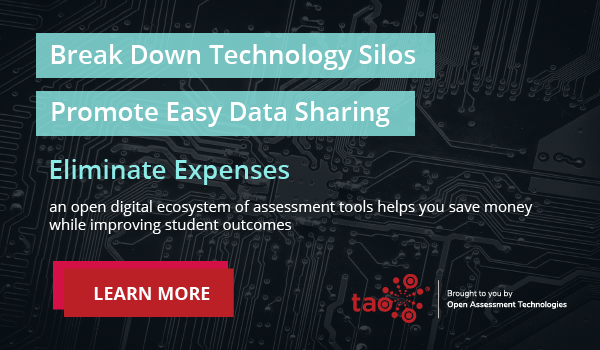Institutes of higher education have been experiencing a decline in student engagement and enrollment in recent years. While many attribute this to the effects of the COVID-19 pandemic there may be deeper-rooted changes occurring as students begin to think about their future. Students today have many options and pathways into different careers and, for some students, the traditional college or university route may not offer the most practical or customizable path forward.
The core issue impacting student engagement and learning in higher education is that many students coming into colleges and universities today are digital natives. Students in this generation can seek out and find knowledge online in small, digestible bits that are endlessly customizable. This is a stark contrast to traditional college courses where students sit for an hour in a lecture hall where learning is dictated to them with little flexibility in terms of what is being taught based on student interest. In short, students are seeking a more student-centered form of learning. One way that higher education can adapt to this and meet student needs is through micro-learning and credentialing software.
What is Micro-learning?
Micro-learning is an educational approach to delivering content in small, specific, and easily digestible units. It is designed to meet the needs of learners who prefer short bursts of focused information over longer, more traditional forms of learning. Micro-learning modules are typically brief, ranging from a few seconds to a few minutes, and cover a specific topic or learning objective.
Key characteristics of micro-learning include:
- Brevity: Micro-learning content is concise and focuses on delivering information in a short amount of time.
- Accessibility: Micro-learning materials are often easily accessible, allowing learners to consume them on various devices such as smartphones, tablets, or desktop computers.
- Focused Learning Objectives: Each micro-learning module typically addresses a single learning objective or a specific skill, making it easier for learners to absorb and retain information.
- Engagement: Micro-learning often incorporates multimedia elements, such as videos, interactive quizzes, or infographics, to enhance engagement and cater to different learning styles.
- Flexibility: Micro-learning can be integrated into different learning environments, including formal education, corporate training, and personal development.
- Adaptability: Micro-learning can be used as standalone content or combined with other learning approaches, making it adaptable to various instructional strategies.
Micro-learning examples include short video tutorials, interactive quizzes, infographics, and brief text-based lessons. This approach is particularly well-suited for addressing specific learning needs, developing student agency, providing just-in-time information, and accommodating busy schedules. While micro-learning may be used in a traditional classroom, it is not limited to school use. It has gained popularity in corporate training, where employees may prefer to learn on the go and in short bursts.
Universities are Facing Student Engagement Challenges
Colleges and universities are facing unique student engagement challenges that stem from advances in technology, the availability of free online learning, and new credentialing tools for professionals. Some of the challenges that universities are facing include:
- Low Student Engagement – College professors in traditional classrooms have reported struggling with low student engagement. Students may have a hard time focusing during lectures or teaching due to cell phone use and readily available distractions available on the internet.
- Low Enrollment – After years of steady increases in college enrollment, 2019-2021 saw a significant dip in students starting college. The reasons for this may be multifaceted, certainly, COVID-19 played a role, however, high tuition and questions about the impact of a college degree may also have played an enormous role.
- Differing opinions on the value of a 4-year degree – traditionally, the 4-year degree has been seen as the gold standard in terms of boosting a person’s value in the workforce and the key to earning more money. While this still holds for many, there are options for on-the-job training and independent learning that are affordable and accessible without having to commit four years and thousands of dollars to complete. Many would-be students are making the calculation that a degree program has significant costs and a good portion of the cost may go to classes that do not translate into a high-paying job.
Where is Micro-learning Happening?
Micro-learning is happening in various contexts and industries, as its adaptable nature allows for implementation in diverse learning environments. Some micro-learning examples that demonstrate where micro-learning is commonly applied may include corporate training, education, professional development courses, language learning, and any variety of short training tasks. In the professional world, micro-learning may happen using credentialing software or credentialing tools which allow employers or potential employers to verify a person’s skills.
Within education, micro-learning examples include chunking learning into small pieces such as small formative assessments designed to assess a single concept rather than a whole lesson or even a whole unit. Another micro-learning example is within a flipped classroom. A teacher may assign small micro-lessons to students to do at home and then give them feedback individually when they return to school. Other micro-lesson examples include:
- Supplementary Learning Materials: Teachers and educators use micro-learning to provide supplementary materials to students. This can include short videos, infographics, or brief articles that reinforce or expand on topics covered in class.
- Revision and Review: micro-learning is effective for quick revision and review sessions. Students can access short quizzes, flashcards, or summary videos to reinforce key concepts before exams or assessments.
- Just-in-Time Learning: micro-learning is well-suited for providing just-in-time learning opportunities. Students can access short tutorials or resources to quickly address specific questions or challenges they encounter during their coursework.
- Skill Development: micro-learning modules are used to teach specific skills or techniques relevant to a course. This could include language learning exercises, coding challenges, or hands-on activities that support the development of practical skills.
How Does Micro-learning Impact Student Engagement?
Micro-learning has been shown to have a positive impact on student engagement. Whether using credentialing software or credentialing to build skills in the professional world, or using micro-learning within a college classroom, students tend to be more engaged when micro-learning tools are implemented. In higher education, students feel like micro-learning gives them the ability to move at their own pace and receive more directly applicable knowledge when compared with traditional learning models.
The relevancy of micro-learning is what sets it apart. Students enjoy not spending time learning huge swaths of information that may or may not be directly applicable to their end goals. With micro-learning, all course materials are designed to be directly applicable to student goals enabling them to pick and choose the learning that they need at a particular place and time.
—
With colleges and universities experiencing a decline in student enrollment and engagement, it may be time to adopt a strategy that meets students where they are at. One way to do this is through micro-learning tools, which give students the learning that they need in small pieces when they need it. Universities could adopt credentialing software and credentialing tools to verify when students have completed sections of a course leading to a more student-friendly and engaging student experience.
While setting this up may seem challenging, there are online platforms that have credentialing software and credentialing tools available. Reach out to TAO testing to learn more about how micro-learning can improve student performance and how to implement micro-learning into the college classroom.


